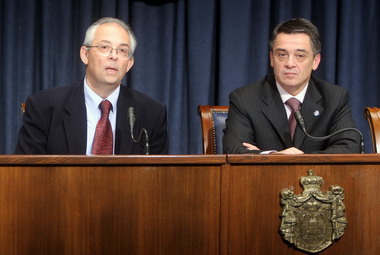- Serbia
Get to know Serbia
- Citizens
Culture and science
Health services
Pension and disability insurance
- Business
Employment
Economy
- Media
- Government
- Contact
Keep in touch
Contact form
Back
Keepin touch
Whether you have a question, comment, suggestion or any problem in the purview of the government, send us your message and we will try to respond as soon as possible. If your problem is not in our purview, we will forward your message to the relevant institution.
Q:
A:
Epidemiological situation in Serbia expected to worsen
Belgrade,
6 November 2009
Serbian Minister of Health Tomica Milosavljevic said today that the epidemiological situation in Serbia is expected to get worse over the next few weeks because of the influenza A H1N1 but there is no reason to panic.
Speaking at a press conference, Milosavljevic said that there are enough medicines and medical equipment and that health centres are ready to respond to any situation.
The Minister said that 229 H1N1 cases have been confirmed up until now and 248 patients found or suspected to have contracted the virus have been hospitalized.
He said that the condition of four patients is serious and they have been put on respiratory support.
An analysis of fatalities is being conducted and the public will be informed of the results. There are indications, however, that the death of these patients occurred because of existing health problems, said the Minister.
He said that there are more than 350 respiratory machines in health centres in Serbia, which is enough for the moment, and that new equipment will be bought if necessary.
He said that vaccination will begin in the middle of December, announcing that on November 9 tenders will be called for bids from manufacturers.
He said that chronically ill patients will be given vaccines first, adding that pregnant women will be able to receive vaccines after the third month of pregnancy.
Predrag Kon, Head of the Health Ministry’s working group for monitoring and controlling pandemics said that if the situation gets worse then public gatherings will be banned and kindergartens closed.
He reiterated that the epidemiological situation in Serbia is not good and it could turn into an emergency.
Presently we are not planning to close schools. In agreement with the Education Ministry we are reviewing measures such as prolonging the holidays, Kon said, adding that vaccination will not have any adverse effects on pregnant women.
He said that patients with serious respiratory infections do not need confirmation that they are infected with the H1N1 virus.
The message to doctors is that they should not wait for confirmation from Torlak laboratories in order to start administering antiviral drugs, said Kon, adding that from now on laboratory analysis will not be done for each and every patient with a serious infection because only 50 samples per week are necessary to have a clear picture of the epidemiological situation in the country.
The Minister said that 229 H1N1 cases have been confirmed up until now and 248 patients found or suspected to have contracted the virus have been hospitalized.
He said that the condition of four patients is serious and they have been put on respiratory support.
An analysis of fatalities is being conducted and the public will be informed of the results. There are indications, however, that the death of these patients occurred because of existing health problems, said the Minister.
He said that there are more than 350 respiratory machines in health centres in Serbia, which is enough for the moment, and that new equipment will be bought if necessary.
He said that vaccination will begin in the middle of December, announcing that on November 9 tenders will be called for bids from manufacturers.
He said that chronically ill patients will be given vaccines first, adding that pregnant women will be able to receive vaccines after the third month of pregnancy.
Predrag Kon, Head of the Health Ministry’s working group for monitoring and controlling pandemics said that if the situation gets worse then public gatherings will be banned and kindergartens closed.
He reiterated that the epidemiological situation in Serbia is not good and it could turn into an emergency.
Presently we are not planning to close schools. In agreement with the Education Ministry we are reviewing measures such as prolonging the holidays, Kon said, adding that vaccination will not have any adverse effects on pregnant women.
He said that patients with serious respiratory infections do not need confirmation that they are infected with the H1N1 virus.
The message to doctors is that they should not wait for confirmation from Torlak laboratories in order to start administering antiviral drugs, said Kon, adding that from now on laboratory analysis will not be done for each and every patient with a serious infection because only 50 samples per week are necessary to have a clear picture of the epidemiological situation in the country.
-
 Belgrade, 22 January 2025
Belgrade, 22 January 2025Egypt one of Serbia’s closest partners on international stage
-
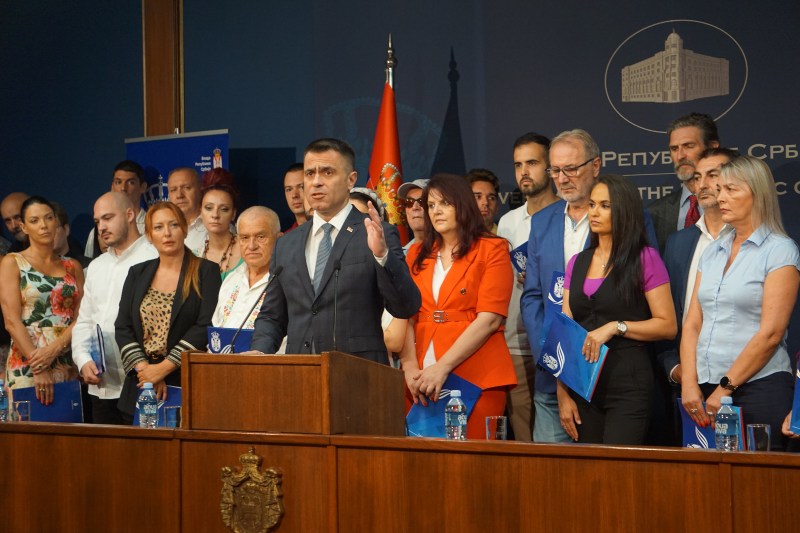 Belgrade, 9 July 2024
Belgrade, 9 July 2024Support for 104 associations in diaspora that preserve Serbian language, culture
-
 Belgrade, 15 April 2024
Belgrade, 15 April 2024Competition for StarTech grants open until 31 May
-
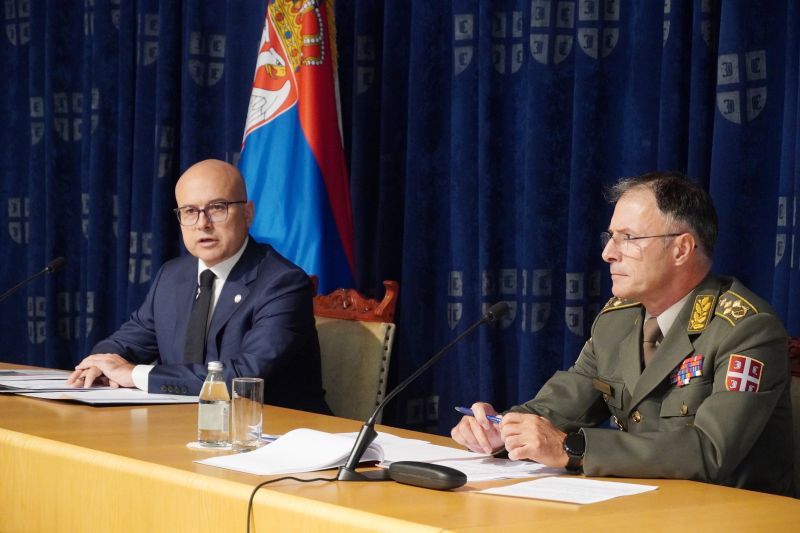 Belgrade, 2 October 2023
Belgrade, 2 October 2023Serbia respects Resolution 1244 and will do everything to preserve peace
-
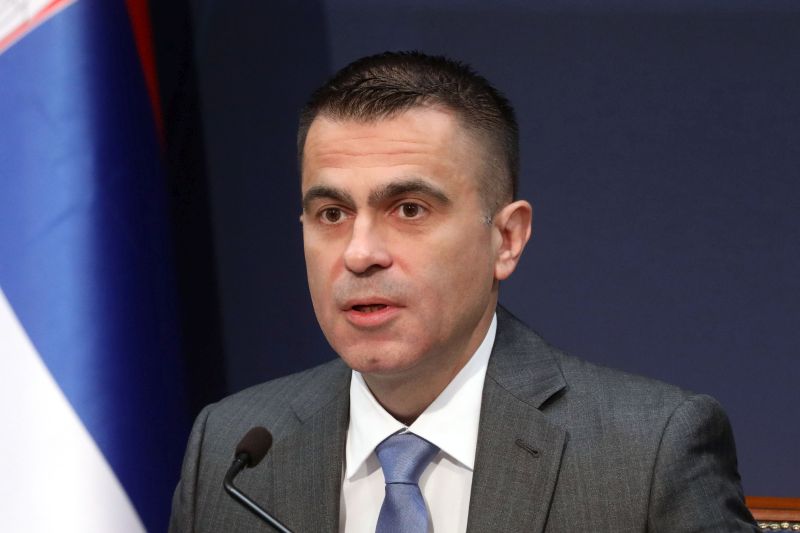 Belgrade, 13 September 2023
Belgrade, 13 September 2023Day of Serbian Unity to be celebrated outside borders of Serbia, Republika Srpska for the first time
-
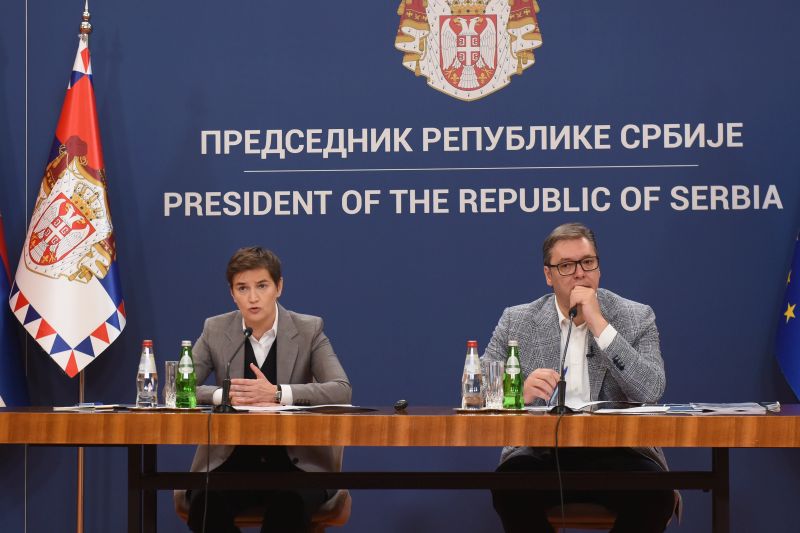 Belgrade, 8 August 2023
Belgrade, 8 August 2023RSD 24.2m in state aid paid out to citizens affected by storm
-
 Belgrade, 17 June 2023
Belgrade, 17 June 2023Belgrade is doing everything to preserve peace in Kosovo and Metohija
-
 Belgrade, 15 June 2023
Belgrade, 15 June 2023Slovenia will continue to support Serbia on its way to EU
-
 Belgrade, 5 May 2023
Belgrade, 5 May 2023Emergency measures, tightening of conditions for possessing weapons
-
 Belgrade, 3 May 2023
Belgrade, 3 May 2023Three days of mourning in Serbia over tragedy at Vladislav Ribnikar primary school

